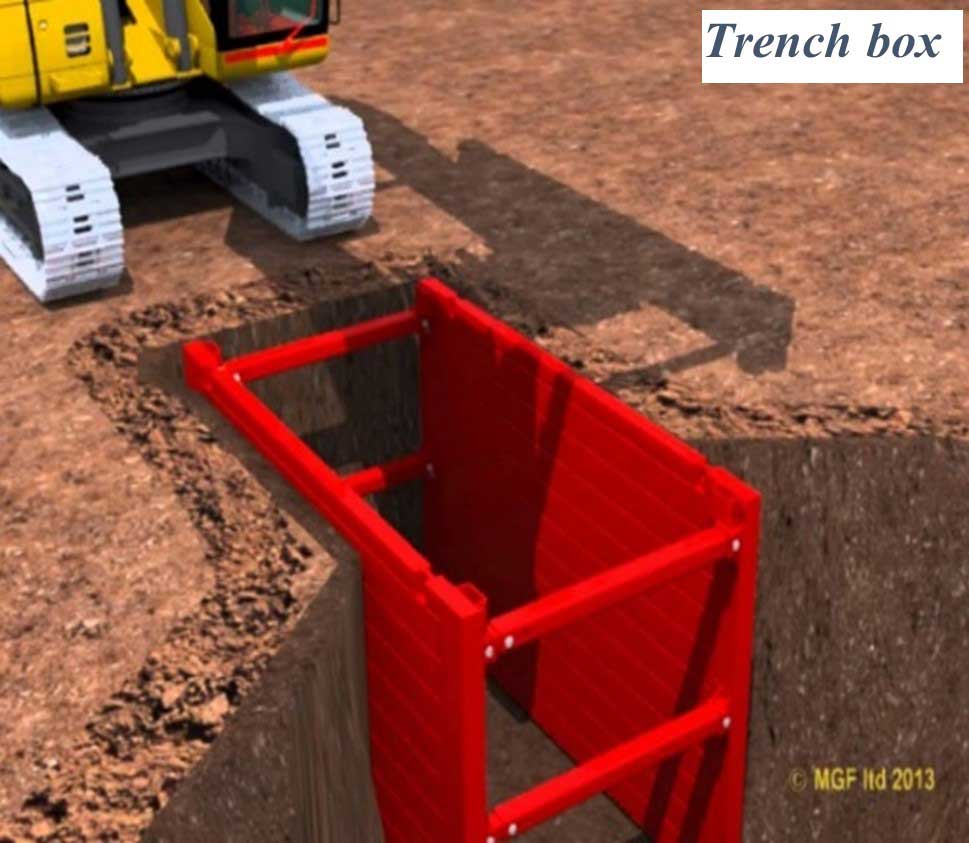Digging trenches is an essential element of many constructions. They are used to construct telephone lines as well as pipes. Due to the high moisture content in these soils, trench can be a laborious task. This is because it’s difficult to not only remove dirt and other debris from nearby objects, but also to ensure that you are safe from serious injuries if you accidentally expose your skin.
Trench boxes are essential to complete any kind of repair or construction work which needs access to the ground. Trench boxes are also used to prevent collapse depending on the soil’s quality and the thickness of the material. They are made of steel/aluminum framing and are used temporarily to hold it in place while excavation takes places within them. In the end, grout is placed to two layers so that no cracks develop at the site level.

Pre Installation
It is essential to recognize any potential risks before starting excavation. This involves knowing what equipment is required and how many people need access to it, and an evaluation of whether there are alternatives to how the job could have been done without risking life and the limb (such minimally invasive techniques). Additionally, a thorough risk assessment must be conducted prior to the excavation survey in order to make sure that all hazards can be easily detected before the excavation. This helps avoid potential problems later.
Also think about the depth of the trench. If you’re working on 5 feet wide of trench that requires support, either the sloping or shoring is necessary depending on how big it becomes. However, if your 20-foot deep trench requires an engineering design upgrade because there aren’t any straight sides at either end, this means that any building above ground must also account for an increased risk of foundation movements due to direct back down into their excavation site.
A ladder, step or ramps should be used to get into the trench. Access must be at least 25 feet from workers in the event of an emergency. The trench box may also be used to check for low oxygen levels, toxic gases and other problems. The assembly of these articulated devices is easy, but they may increase the risk of stacking them on top of one another as you aren’t sure how high the piles can reach to their vulnerable bottom.
Care For the trench
1. It is recommended to inspect your trench box and the supporting structure every day to ensure that there is no damage or movements.
2. Every person working on the site must wear protective equipment and wear steel-toed footwear.
3. It is vital to keep tools and heavy equipment at least three feet from the trench’s edge.
Extracting
In the event of a trench, it will likely be more difficult than excavating it since the earth surrounding it moves. You can use chain slings to remove it or three ways to help , one of them being using an overhead crane.
1. Straight Pull: This technique is the most simple. It is as simple as securing your sling to two points and then raise it up.
2. Half Pull: A half-pull is used to attach the trench box to one side and lift as much as possible. This will enable you to take away any dirt or debris without damaging your yard.
3. Single Pull: To relocate the trench box you simply attach a single leg of chain slings to an lifting or extraction point and then raise each panel at a time. Pull the lever to take away the trench box.
For more information, click shoring boxes


